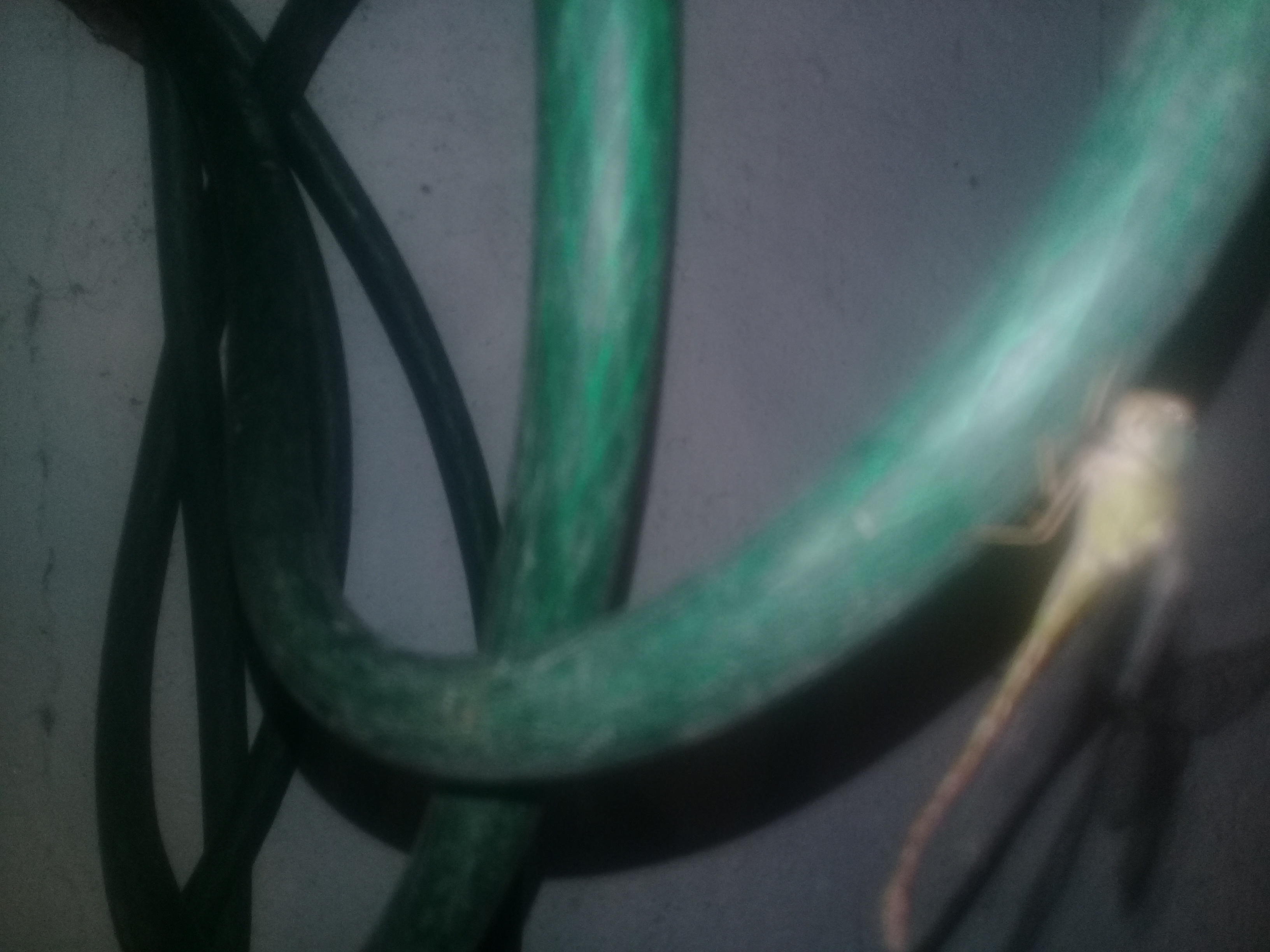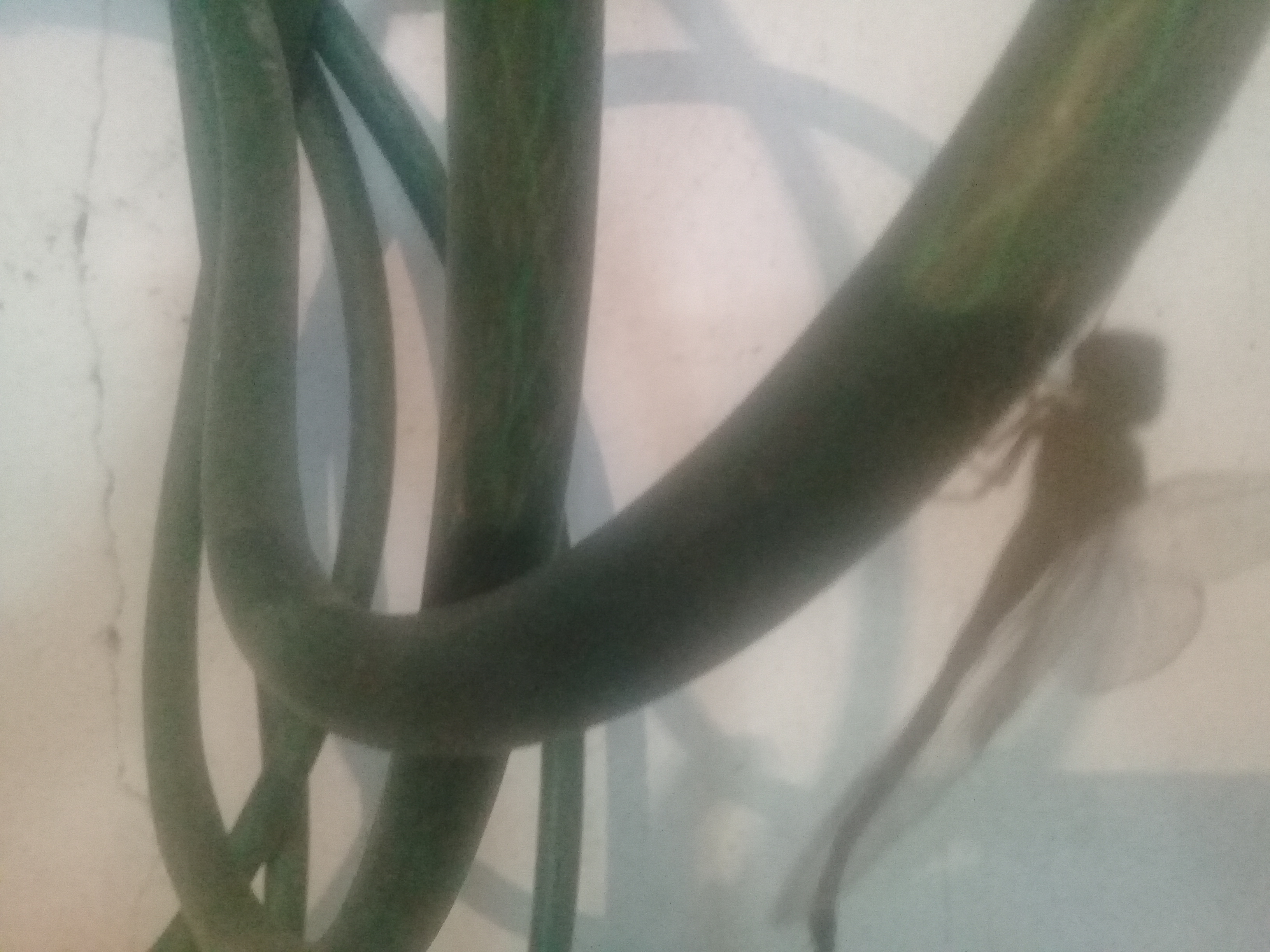Investigative description of a dragonfly seen in my house // Anisoptera

Hello friends and followers of the hive platform.
In this opportunity I want to make a brief description about the Dragonfly, this is an investigative process that I wanted to develop because since I saw this specimen I started thinking about how important it can become in the biodiversity of the planet, so I took the opportunity to photograph it with my Samsung J2 Prime cell phone, which is why all the photos you see in this post are unpublished and of my complete authorship.

The process in which I discovered it was when I was about to go to the laundry room of my house, when I arrive to take the hose to water the plantations that are in my yard I find this beautiful specimen, and I say beautiful because it seemed so when I saw it, I went back to my room to look for the phone with which I was going to take a picture, when I arrived back to the place where I had seen it, it was still there, which is why I carefully took some pictures from different angles.
Once I had the images saved and archived, I proceeded to investigate about this animal.
When I showed a friend the photos to ask him what the name of this animal was, he told me that its common name was Dragonfly, however, after some research I got the following information:
Its scientific name is Aeshna cyanea and it belongs to the Kingdom animalia, whose phylum is Arthropoda, the class is insecta, so I assume to my slight understanding that it is an animal that is within the insect classification.
However it is not its scientific name nor its classification that caught my attention, but the relevant information about its natural habitat, since in the documentation that I made by previous reading, it says that this insect has its natural habitat in the vicinity of lakes, puddles, rivers and swampy lands, and it is not that my hometown does not have these characteristics, Santa Bárbara de Zulia, Colón Municipality, Zulia State - Venezuela is a small town but before its deforestation process it must have been a jungle and swampy land, but the surprising thing is that at present and in spite of the deforestation product of the population growth you can see specimens like this one so close, I believe that I have been a lucky one.
Dragonflies seem to be strong predators of insects of similar size such as mosquitoes and other small insects such as flies, bees, butterflies and moths, however they have not been found to bite humans, which is reassuring because I know that there is no way I could have been bitten by this insect.
Also the biological studies about this insect show that they have highly migratory characteristics, that is to say that some species of dragonflies can move long distances, this is one of the reasons why perhaps this dragonfly that you could photograph could have migrated from some swampy areas of some paddocks that are in some plots away from the town of Santa Barbara de Zulia, so I assume that simply made a rest stop in the hose that is located in the yard of my house, specifically in the laundry room of my home.

In the case of this publication I am calling this specimen Dragonfly, but in the way I see it has the wings attached to the body it is probably a damselfly whose scientific name is Zygoptera, however it belongs to the same class and order as the Dragonfly it is:
Class: Insecta
Order: Odonata
But to avoid complications let's see the specimen found in this same biological order where these insects have much similarity, perhaps in the comments many of my followers who dominate more than me the area of biology can tell me if it is Dragonfly or damselfly.
Conclusion
From my perspective, I think that these insects, being predators of other insects that can mean large plates in certain ecosystems, must exist in considerable quantities to maintain a biological balance in the existence of other animals that are their prey and thus maintain an ecological balance in the various ecosystems, which is why any contribution to the maintenance of this species will surely contribute greatly to nature and the various ecosystems of the world.
I hope this brief description has been to everyone's liking, maybe soon I will be able to see another flying animal in my backyard and share with you my experiences. Greetings to all until a next delivery your friend @carlos84 says goodbye.
Observations
All images are my own, and were taken with the camera of my Samsung J2 Prime cell phone. The cover image was edited using Microsoft Powerpoint design tools.
Reference
Thanks for your contribution to the STEMsocial community. Feel free to join us on discord to get to know the rest of us!
Please consider supporting our funding proposal, approving our witness (@stem.witness) or delegating to the @stemsocial account (for some ROI).
Please consider using the STEMsocial app app and including @stemsocial as a beneficiary to get a stronger support.
Thank you for your support. Regards